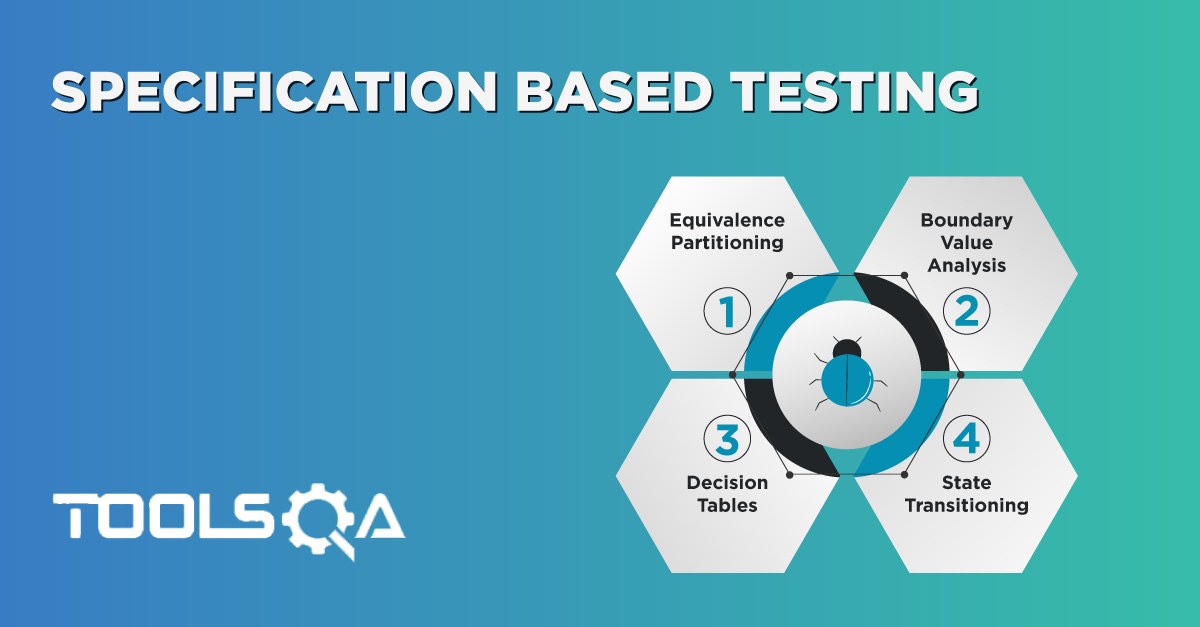In the realm society development, ensuring the reliability and features of code is paramount. This is especially true when dealing with AJE code generators, which in turn play a important role in automating the creation associated with software. One method of verifying the correctness of such developed code is specification-based testing. This technique involves creating tests based upon specifications or even requirements rather compared to the code by itself. In this write-up, we will look into the principles plus practices of specification-based testing and their significance for AI code generators.
What is Specification-Based Testing?
Specification-based testing, also known as black-box testing, targets validating the behaviour of software based upon its specifications or perhaps requirements. Unlike various other testing methods of which might examine the interior workings of typically the code, specification-based assessment assesses whether the particular software meets the desired outcomes and adheres to typically the specified requirements. This kind of approach is very helpful in scenarios where internal logic of the code is sophisticated or not effectively understood.
Key Guidelines of Specification-Based Testing
Requirement-Based Test Design and style: The building blocks of specification-based testing lies within understanding and recording the requirements from the software. Test circumstances are designed dependent on these demands, ensuring that the software performs as expected in a variety of scenarios.
Input-Output Mapping: Tests usually are created by understanding input conditions and the expected results. The focus is definitely on ensuring that will for given advices, the software generates the correct results, in line with the specifications.
Check Coverage: The goal is to achieve extensive test coverage of the requirements. This includes testing almost all possible paths, border cases, and boundary conditions to ensure that the software program acts correctly under numerous circumstances.
No Program code Knowledge Required: Testers do not want to understand the interior structure of the code. Instead, they rely on the specs to create and execute tests, making this approach appropriate for scenarios in which code is produced automatically or in which the codebase is complex.
Importance of Specification-Based Testing for AJE Code Generators
AI code generators, these kinds of as those making use of machine learning types to automatically produce code, present distinctive challenges. Specification-based testing is particularly beneficial for these equipment because of several causes:
Ensuring Correctness: AI code generators can easily produce code that will is syntactically proper but semantically problematic. Specification-based testing helps ensure that the created code fulfills the particular intended requirements and even behaves correctly in practice.
Managing Intricacy: The internal reasoning of AI-generated computer code can be complicated and opaque. Specification-based testing provides some sort of way to confirm the functionality without having needing to understand the intricacies of the generated code.
Adaptability: As AI versions evolve and are usually updated, the specs may also modify. Specification-based testing enables the adaptation of test cases to allow for new or modified requirements, ensuring continuous validation of typically the generated code.
Automatic Testing Integration: Specification-based tests can always be integrated into computerized testing frameworks, permitting continuous validation of AI-generated code included in the development pipeline. It will help in identifying problems early and preserving high-quality code.
Procedures for Implementing Specification-Based Testing
To successfully implement specification-based testing for AI program code generators, several techniques should be regarded as:
Detailed Specification Documents: Start with thorough and clear specs. These documents have to outline the efficient requirements, performance conditions, and any constraints for the software. A lot more detailed the particular specifications, the even more effective therapy will certainly be.
Test Circumstance Design: Develop test cases that cover a variety of scenarios, including typical use cases, edge cases, and even failure conditions. Employ techniques such as equivalence partitioning, border value analysis, in addition to state transition assessment to create powerful test cases.
Test out Execution: Execute the test cases against the particular AI-generated code. Assure that test atmosphere closely mirrors real-world conditions to precisely assess the code’s behavior.
Defect Revealing and Tracking: Doc any discrepancies between your expected and actual outcomes. Use problem tracking tools to control and resolve issues, and ensure that the feedback is used to increase the two AI program code generator and the particular specifications.
Continuous Incorporation: Incorporate specification-based tests into the constant integration (CI) pipe. This ensures that will every change to be able to the AI signal generator or maybe the requirements is automatically examined, facilitating early diagnosis of issues.
Evaluation and Update: On a regular basis review and upgrade test cases and even specifications. As the AI model advances or new requirements emerge, ensure that the test suite remains to be relevant and thorough.
navigate here and Factors
While specification-based assessment offers significant positive aspects, it also arrives with challenges:
Complex Specifications: Developing in depth and accurate requirements can be demanding, especially for intricate systems. Incomplete or ambiguous specifications could lead to ineffective testing.
Test Upkeep: As the AI code generator or even requirements change, test out cases may need to be up-to-date. This requires on-going effort to maintain the relevance and effectiveness in the tests.
Test Data Supervision: Generating and taking care of test data of which accurately reflects real-world conditions may be complex. Proper data administration practices are necessary to ensure the validity of the tests.
Device Integration: Integrating specification-based testing with existing tools and frameworks could be challenging. Make sure that the picked tools support the particular required testing procedures and workflows.
Summary
Specification-based testing is a powerful approach intended for validating AI-generated signal. By focusing in the needs and anticipated outcomes, this technique ensures that the generated code fulfills its intended purpose and performs appropriately in various scenarios. During your stay on island are problems to deal with, the positive aspects of improved correctness, adaptability, and incorporation make specification-based assessment a valuable exercise within the development of AI code generation devices. As AI technologies continues to enhance, adopting robust testing practices will always be crucial for keeping the quality and dependability of automated program code generation systems.